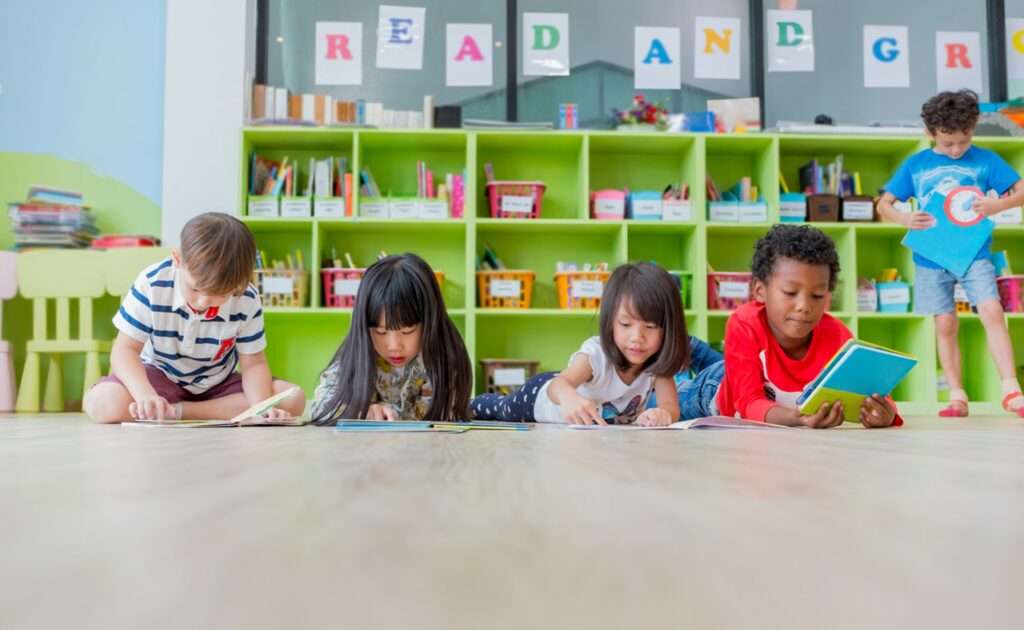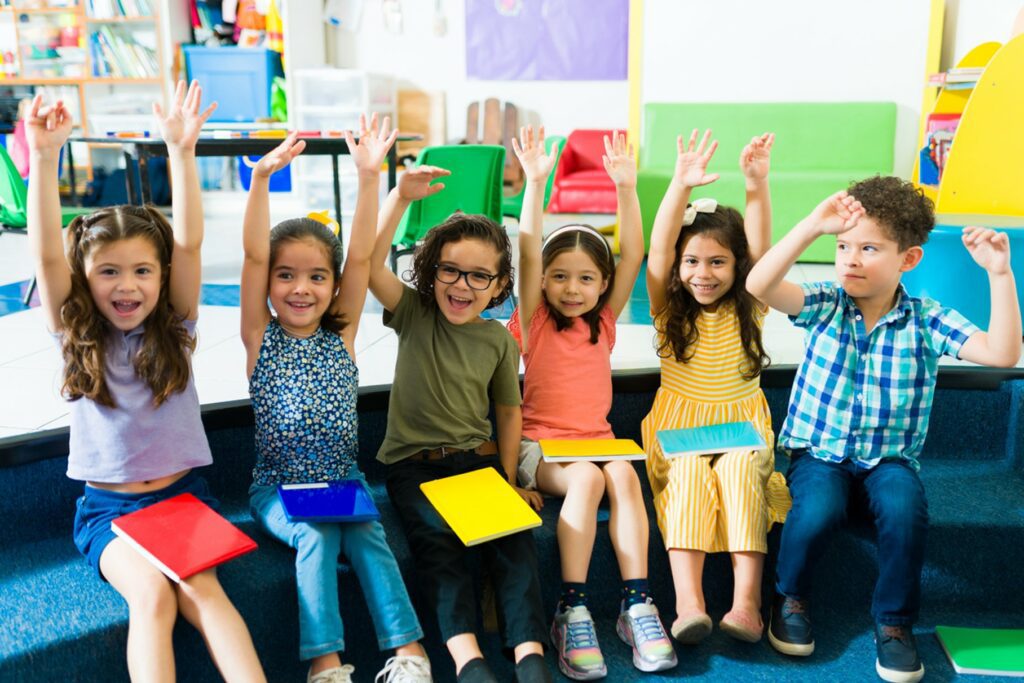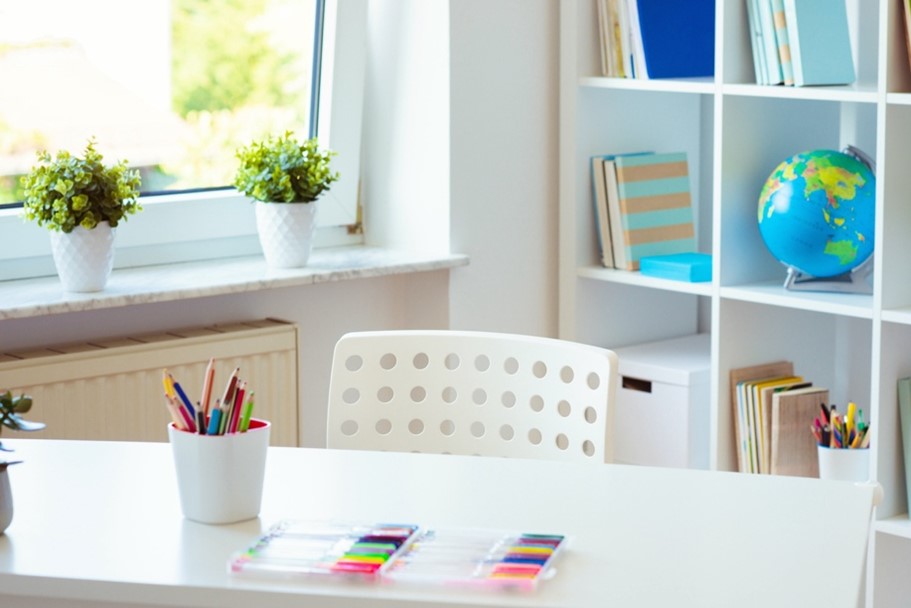
Designing emotion-focused learning environments for early childhood spaces is a task that requires careful planning. It is crucial to create spaces that not only meet the functional requirements but also foster emotional well-being and support the developmental needs of young children.
In the realm of early childhood education, emotions play a pivotal role in shaping a child’s learning journey and fostering a sense of belonging within the educational community. Space is physical in nature, yet the concept of place emphasizes an emotional connection that is created by the inhabitants of the space.1
Faith Swickard, a renowned architect and researcher, has delved deep into the spatial conditions of emotions within the context of architecture in early childhood classroom settings. Swickard’s theory of the “Potential Space Framework” highlights the significance of emotional contentment and engagement as the foundation of learning and community building. By incorporating these principles, facility planners and classroom designers can create an emotion-focused early childhood space that promotes optimal learning experiences.

Quantitative Tips for Designing Learning Environments:
Emotional Contentment and Engagement: When children feel emotionally content, they are more likely to be actively engaged in their learning and develop meaningful connections within their school community. Swickard’s theory emphasizes the importance of designing spaces that promote emotional well-being, as this fosters a positive and supportive learning environment.
1. Space Planning: Ensure that the layout of the classroom allows for easy movement and accessibility. Provide enough space for children to engage in various activities, such as group work, individual play, and quiet reflection.
2. Lighting: Natural light is essential for creating a positive and stimulating environment. Incorporate large windows and skylights to maximize the amount of natural light entering the space. Additionally, consider using adjustable artificial lighting to create different moods and atmospheres.
3. Acoustics: Pay attention to the acoustics of the space to minimize noise disruptions. Use sound-absorbing materials, such as carpets, curtains, and acoustic panels, to create a calm and quiet environment that supports concentration and communication.
Qualitative Tips for Designing Learning Environments:
The Potential Place Framework: The Potential Place Framework is a holistic approach to designing early childhood spaces that focuses on the emotional well-being of children. It emphasizes the importance of creating an environment that supports the development of positive emotions, relationships, and a sense of belonging. By incorporating the “Transitional Space” and “Spatial Conditions of Emotions,” facility planners and classroom designers can create spaces that nurture the emotional growth and overall well-being of young learners.
1. The Transitional Space: The Transitional Space is the area between the outside world and the learning environment. It serves as a buffer zone that helps children transition from one emotional state to another. Create a welcoming entrance that reflects warmth and comfort, allowing children to feel safe and secure as they enter the learning space.
2. Spatial Conditions of Emotions: Consider the emotional needs of children when designing different areas within the classroom. Create zones that cater to different emotions, such as a cozy reading corner for relaxation, an active play area for excitement, and a quiet space for reflection. Incorporate a variety of tactile items that are aesthetically arranged and easily accessible to stimulate sensory experiences and evoke positive emotions.
Spatial Conditions of Emotions: Swickard’s theory outlines the importance of spatial conditions in nurturing emotional well-being. Emotions are not mere fleeting experiences; they form the very foundation upon which learning and educational communities thrive. Swickard’s theory emphasizes that by creating spaces that cater to emotional well-being, educators can unlock the true potential of young learners. When children feel emotionally content, they are more receptive to new knowledge, engage in meaningful interactions, and develop a strong sense of belonging within their community. Here are some key aspects to consider:
1. Comfort and Safety: A classroom should provide a sense of comfort and safety, both physically and emotionally, acting as a haven for children to freely express themselves. Soft seating areas, cozy nooks, and warm colors can create an inviting atmosphere that fosters emotional contentment.
2. Flexibility and Freedom: Spaces that allow for flexibility and freedom of movement empower children to explore and engage with their surroundings. Incorporating adjustable furniture, open floor plans, and designated areas for different activities can encourage emotional engagement and self-expression.
 3. Nature and Biophilic Design: Connecting children with nature through the incorporation of natural elements, such as plants, natural light, and outdoor spaces, can have a profound impact on their emotional well-being. Biophilic design principles (connecting people with nature) can create a calming and soothing environment that promotes emotional balance and engagement. 4.Sensory Stimulation: Engaging the senses through a variety of materials, textures, and colors can evoke positive emotions and enhance the learning experience. Incorporating tactile surfaces, visually stimulating artwork, and interactive elements can create a multi-sensory environment that sparks curiosity and emotional engagement.
3. Nature and Biophilic Design: Connecting children with nature through the incorporation of natural elements, such as plants, natural light, and outdoor spaces, can have a profound impact on their emotional well-being. Biophilic design principles (connecting people with nature) can create a calming and soothing environment that promotes emotional balance and engagement. 4.Sensory Stimulation: Engaging the senses through a variety of materials, textures, and colors can evoke positive emotions and enhance the learning experience. Incorporating tactile surfaces, visually stimulating artwork, and interactive elements can create a multi-sensory environment that sparks curiosity and emotional engagement.
Faith Swickard’s theory on the spatial conditions of emotions within early childhood classroom settings sheds light on the profound impact emotions have on learning and community building. How the sequence of spatial conditions of shape and volume present together can determine the type of feeling experienced in a space.2 Designing an emotion-focused early childhood space requires a thoughtful balance between quantitative and qualitative considerations.
By prioritizing emotional contentment and engagement, educators and architects can create spaces that empower young learners to thrive academically, socially, and emotionally. Through implementation of the tips mentioned above and incorporating the “Potential Place Framework,” facility planners and classroom designers can create learning environments that promote emotional well-being, foster positive relationships, and support the holistic development of young children. Let’s embrace the power of emotions and design learning environments that nurture the hearts and minds of our future generations.
Work Cited: 1 – Jobb, C. (2019). Power, Space, and Place in Early Childhood Education. The Canadian Journal of Sociology / Cahiers Canadiens de Sociologie, 44(3), 211–232. https://www.jstor.org/stable/26795018 2 – https://www.faithswickard.com/spatial-conditions-of-emotion









